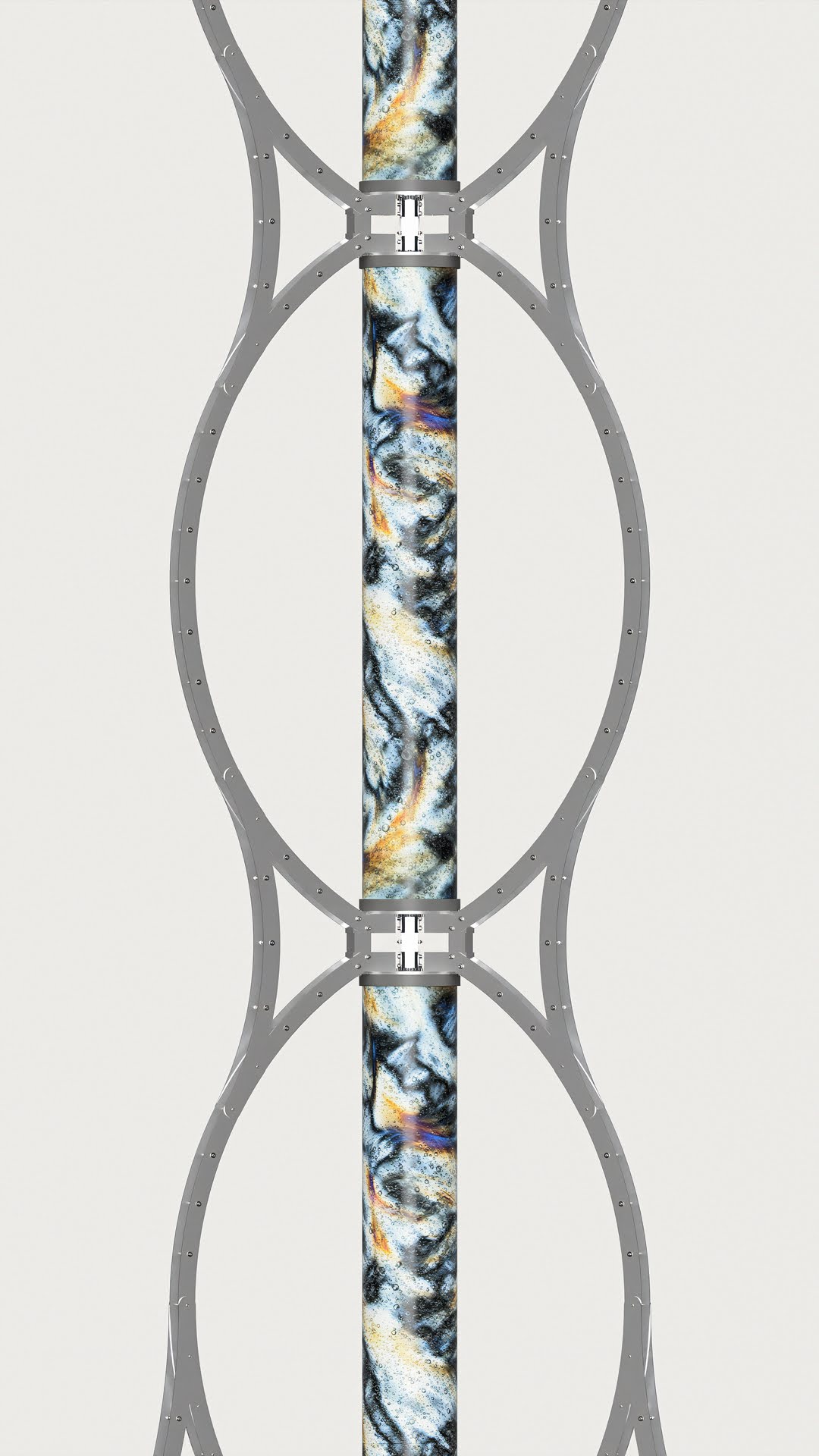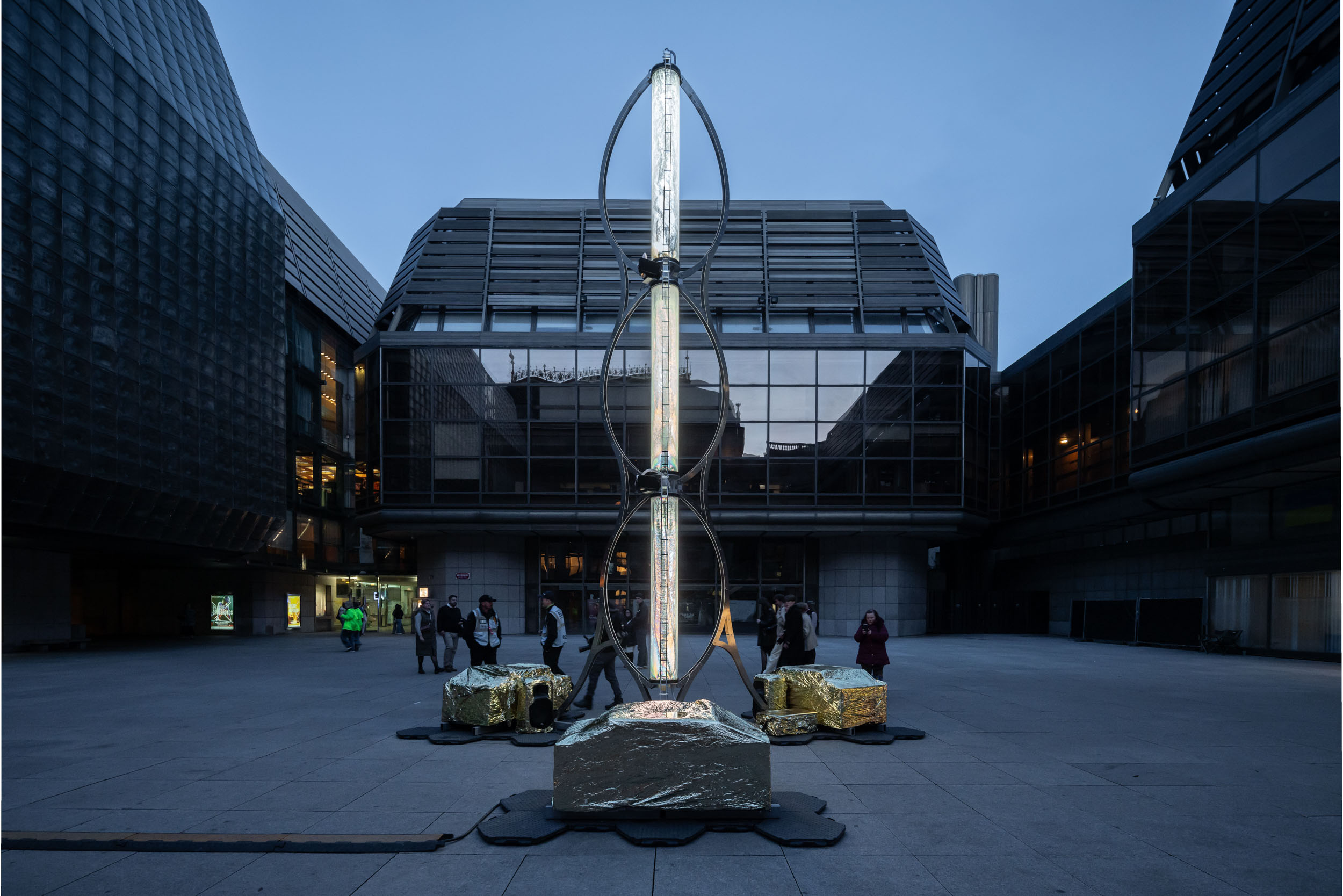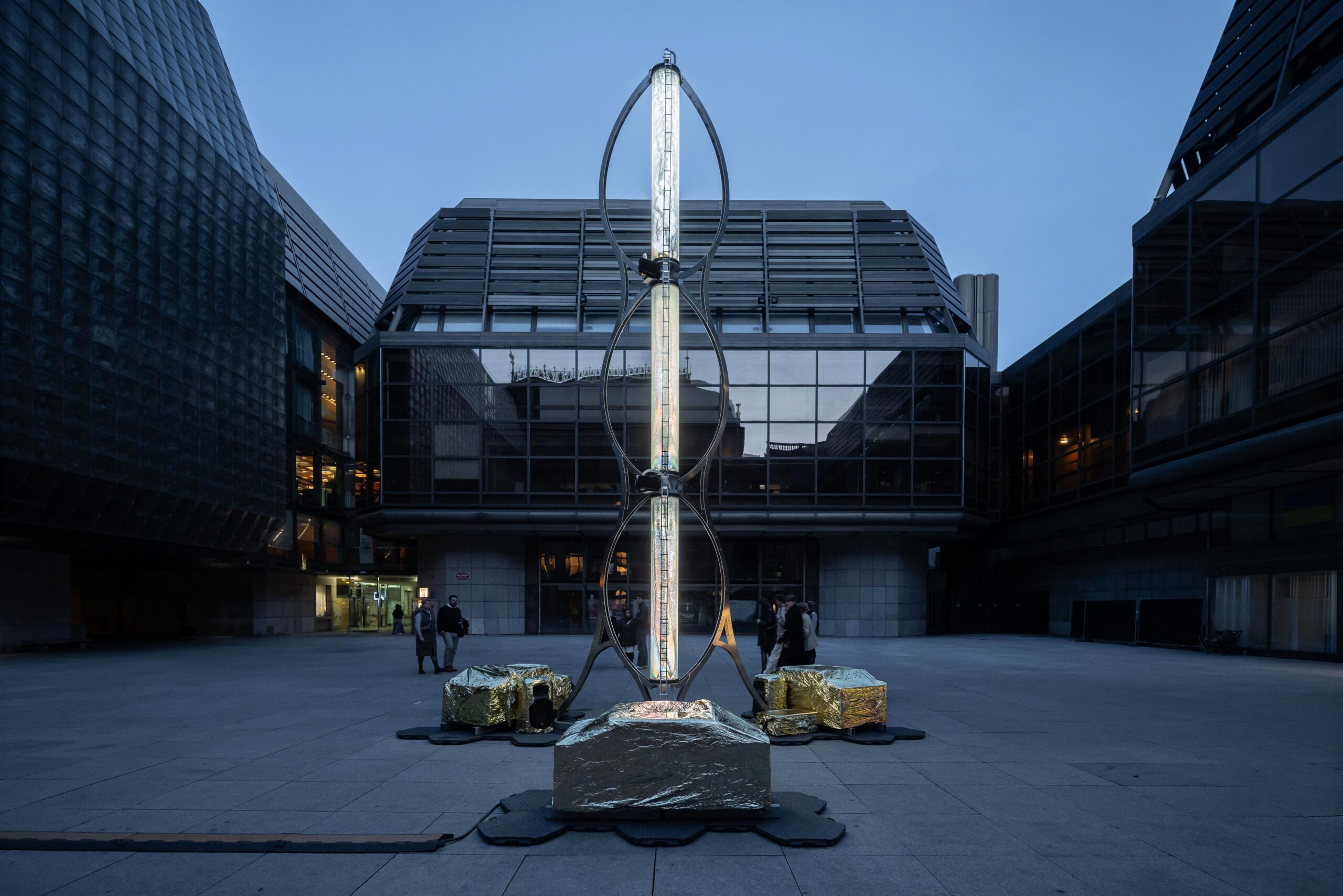
Audire Fluctus
Audire Fluctus is a transmedial sculpture at the intersection of a light object and an interactive data-totem. Its essence lies in the connection between the physical world and the invisible electromagnetic fields that surround and continuously affect us. The work monitors the technological activity of its environment and visualizes electromagnetic radiation generated by electrical grids, communication devices, and systems operating on electrical current. Electromagnetic fields, which we usually cannot perceive directly, are translated into light and color patterns through Audire Fluctus. The sculpture thus raises the question of how we perceive and interpret a reality that is partially invisible yet profoundly present.
The key element of the work is a medium called Spektraflux, a liquid with an anisotropic structure that can change the refractive index of light depending on electromagnetic activity. Its behavior produces unique color textures that reflect the intensity and dynamics of invisible fields, shifting to black and white marble patterns when at rest and changing to shades of the rainbow spectrum when mechanically moved. This shifting visual effect highlights the nature of constant movement and change inherent in both the electromagnetic waves themselves and the technological infrastructure that generates them.
The work functions not only as a visual object but as an active element that adapts to its surroundings. Situated in the piazzetta of the National Theatre, it responds to the presence of numerous electromagnetic devices in the area, becoming a sensor that makes visible the presence of invisible forces. However, this phenomenon is not confined to the physical world alone – it manifests the continuous exchange of data, signals, and energy that defines our environment.
Here, the concept of the piece intertwines with the philosophy of Karen Michelle Barad, particularly her theory of agential realism, where objects, phenomena, and observers are not separate but co-create each other within a continuous process of interaction. In the context of Audire Fluctus, it is not merely a depiction of invisible technology but an encounter in which the sculpture, the viewer, and the electromagnetic field enter into a dynamic process of mutual influence. Perception here is not confined to passive observation but becomes an active co-creator of the phenomenon – every step the viewer takes, every shift in the electromagnetic field is a co-creative act, in which reality is continually reshaped.
Thus, Audire Fluctus does not merely reveal a hidden layer of our technological environment but redefines the very concept of interaction between the world, the viewer, and the object into a dynamic act where the boundary between subject and object is not pre-determined but is continuously born and dissolved depending on the act of observation and participation.






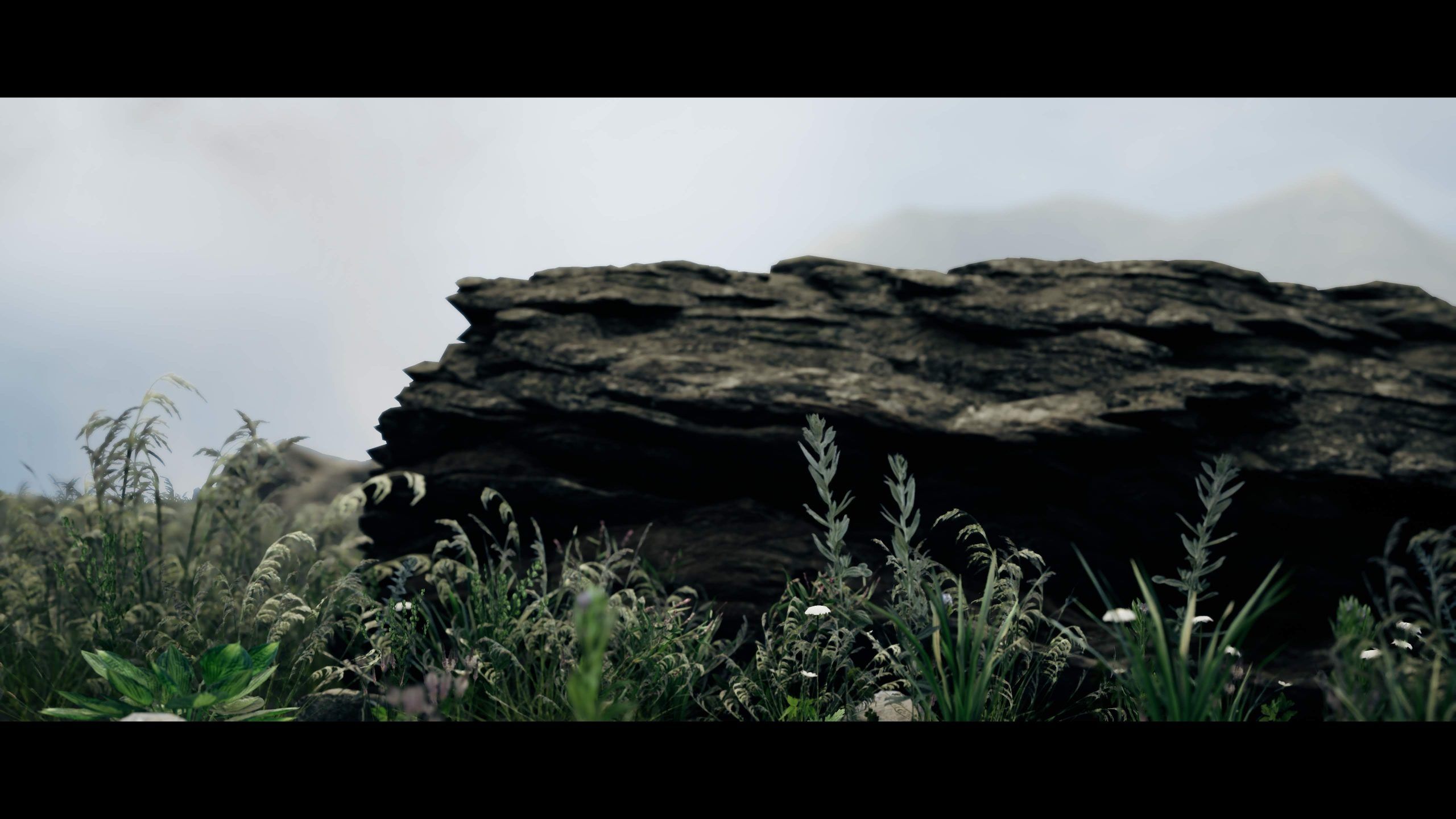






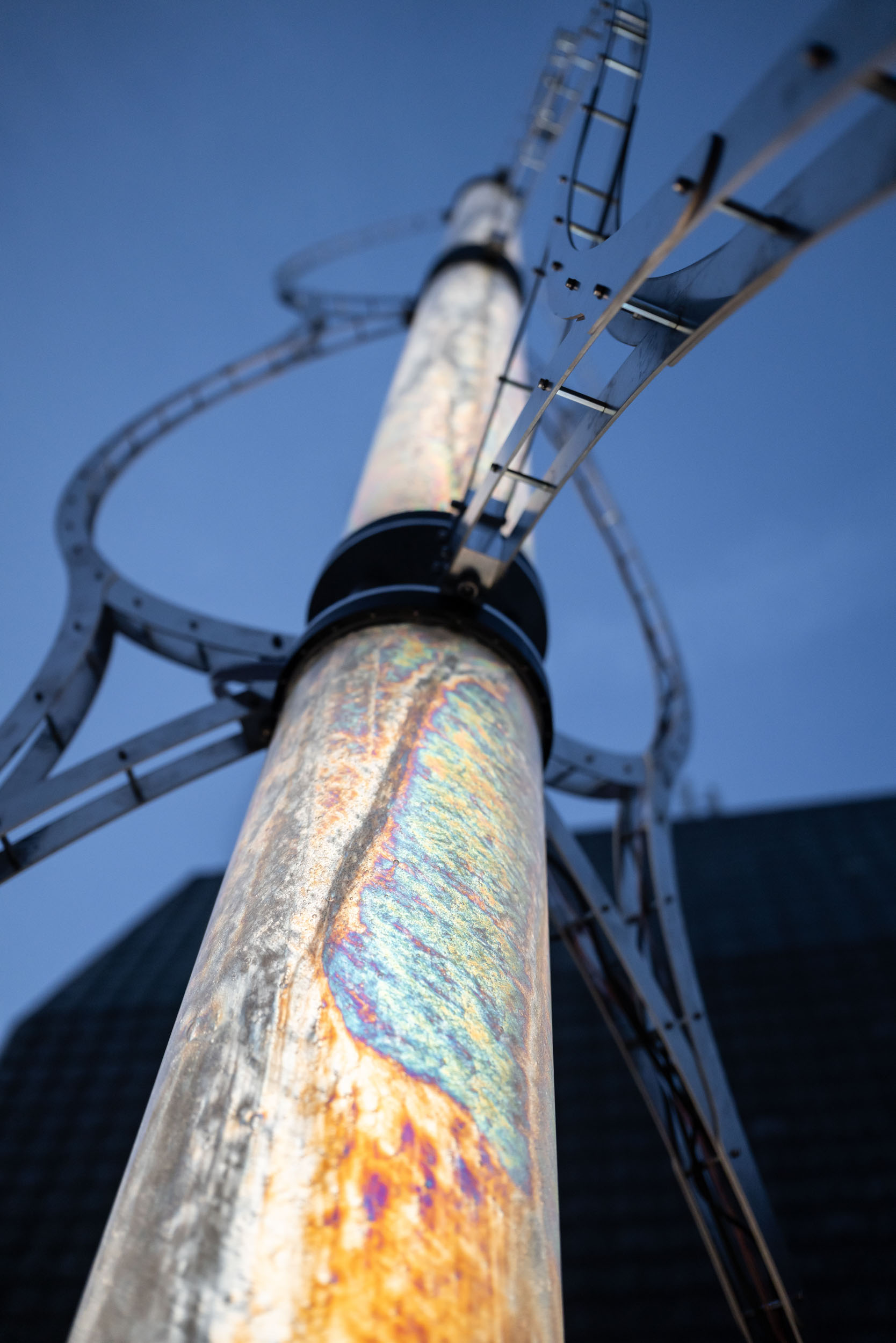











- three-module construction
- circulation system for Spektrflux circulation
- code processing EL. waves based on ambient measurements
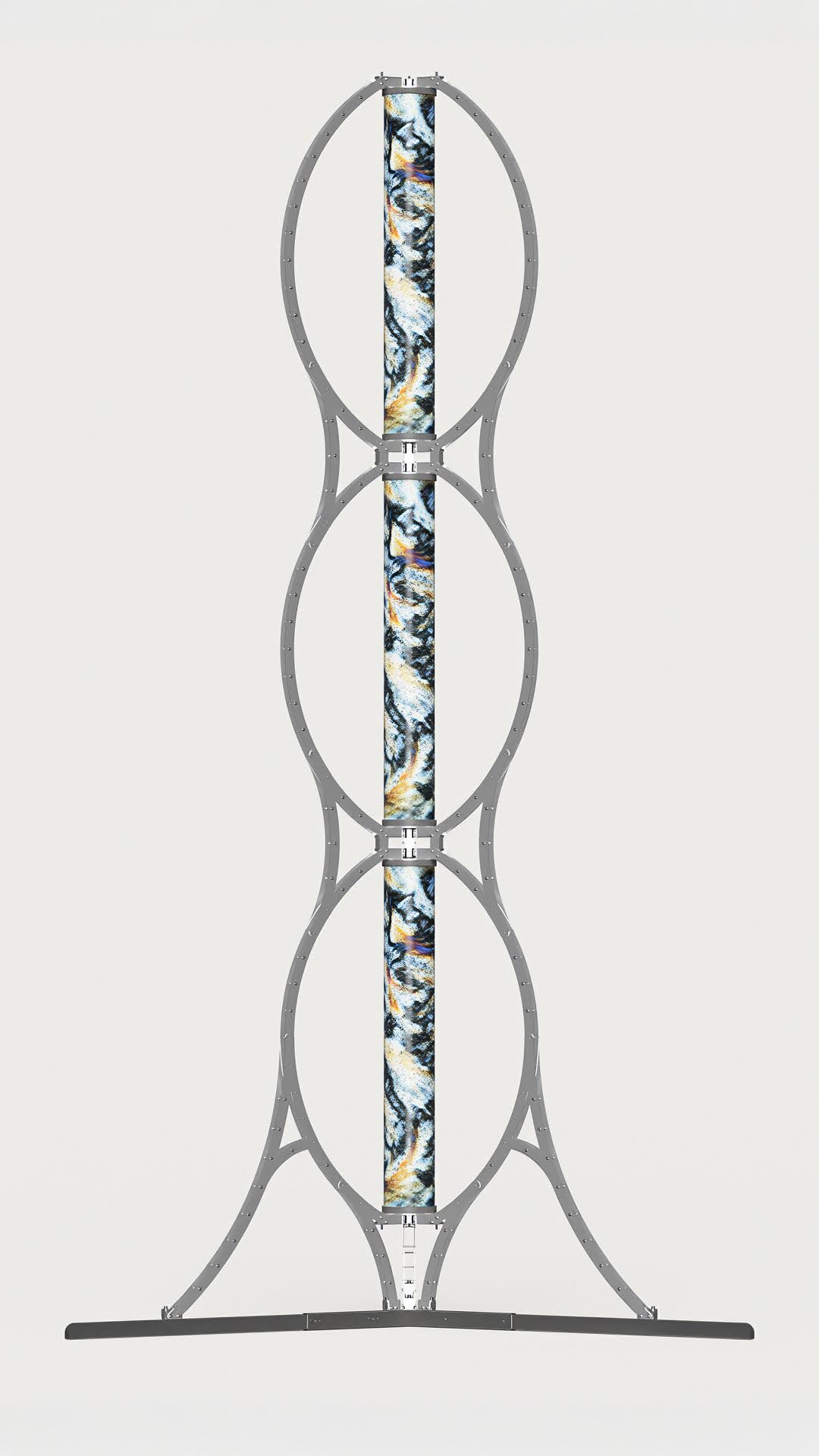



- Spektraflux, EN AW-6061 T6
- PMMA, pumps
- mikrokontrolers, 5500x7000mm




























